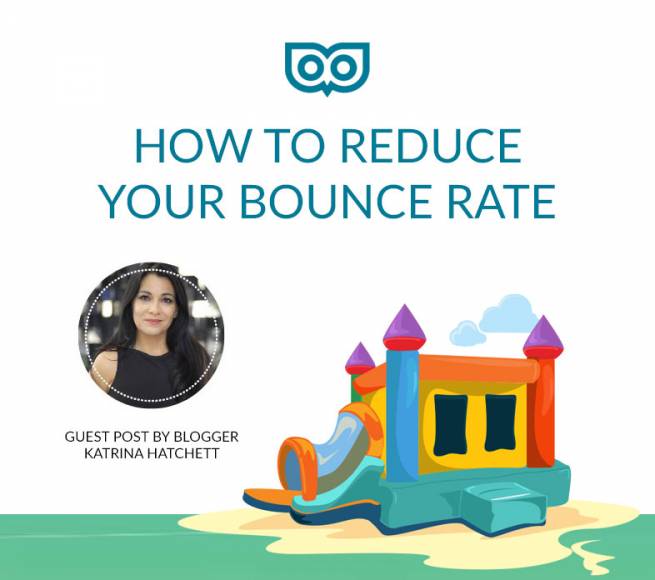
7 innovative web design ideas to reduce your bounce rate
Getting clicks on your website is great, but it’s only half of the battle. Getting your visitors to stay on your website is an altogether different challenge, but something that is essential for keeping your search engine ranking high and converting clicks into customers.
Thankfully, experts in web design have come up with some ingenious ways to design your page to keep visitors engaged and lower your bounce rates.
1 Get to know your bouncers
It helps if you learn as much as you can about the people who are driving up your bounce rate. Services like Google Analytics can provide you with an insight not only into what your bounce rate is, but who exactly is most likely to bounce. You can figure out what browser your highest bounce rate is coming from, which might tell you that your website isn’t optimised for their experience. Or you might find that your bounce rate is down to a group of misled visitors from outside your target market, which you can solve by making your web presence more specific and targetted.
2 Channel the flow
Presenting all your information on one page is usually a logistical nightmare, and it’s bound to overwhelm your site’s visitors. The trouble is, some designers (not TLD!) try to mitigate this by creating a menu system that’s even harder to navigate. Try thinking about how you can channel your visitors on a curated ride through your website to keep them reading for longer.
“Think of it like a breadcrumb trail,” says Aussi Markista, a web designer at Brit Student and Australia 2 write. “You want to entice viewers to follow a flow of information by lining up nuggets of information. Think about your favourite social media feed, how they structure the page so you never want to stop scrolling. Steal some of that thinking for your website and you’ll keep visitors engaged for longer.”
For example, Metropolis private hire party venue, club and bar; their site makes good use of strong lines and imagery, and keeps the information short and sweet, with key selling points, so as not to overwhelm the visitor with the booking options available They also entice enquiries via the pop up contact forms. This club is used for 2 purposes with 2 websites, the nightclub & the gentlemans strip club in London. Google only allowed 1 of the websites to have a google my business listing, this has caused nightclub website visitors to visit the gentlemans club site by mistake. On that basis, the client added a link from the gentlemans club main navigation to the nightclub site, to fix this and help improve the gentlemans club websites bounce rate by sending them as referral visitors to the nightclub site instead. A new shared homepage for the metropolis club nights & strip club was also added to be used for the google business listing to further improve this situation.
3. Advertise with care
For some businesses, adverts on their website are an easy money earner, but for readers they’re a necessary evil. Try not to make their reading experience any harder by filling the screen with ads. By thinking about where your ads are placed and what kind of ads are on display, there are ways to keep on advertising without interrupting the flow of your page. If you slap ads everywhere your visitors are far more likely to bounce away.
4. Don’t ignore accessibility
Further to the point on flow, you want to make sure your design is accessible to the largest audience possible. Think outside the box when you’re considering your design. Is your content legible to someone with a different operating system, older technology, or even a visual impairment? These points will be more important to some markets than others, but you’re doing yourself no favours if you only design web pages for people like yourself.
5. Do what you say on the tin
One of the main reasons visitors click away from sites is that they’re not getting the experience they were hoping for. Sally Phillips, a marketer at Writemyx and Next Coursework, breaks it down best: “don’t promise something on social media or a search engine slug that you can’t deliver. If you’re saying you’ve got a list of top ten smartphone cases, don’t spend the first half of the page talking about your new app. Fulfil your promises, and try to be concise about it, or your visitors will lose faith in you very quickly.”
6. Interlink for the win-terlink
A tried and tested tactic for keeping visitors on your site is interlinking between other pages on your site. This works best if you’ve got a targeted plan for your content marketing. A post on the best winter coats could link nicely to another on the best winter boots, or an article on the newest cybersecurity threats could recommend another on top anti-virus software.
7. Plan content with variety
It’s in the nature of the nanosecond attention span world we live in that, no matter how scintillating your written content is, readers are going to lose interest eventually. For those moments, keep them engaged with a variety of different content. Think about how you can share your same brand values through images, videos, or audio content. Not only will this keep visitors on your page for longer, it will also help bring in a wider variety of users and fits in great with a strong social media marketing strategy.
Katrina Hatchett is a blogger at Write my research proposal and writer for Origin Writings. She is involved in many business projects, and enjoys identifying project problems and finding innovative. She also writes about web design for Thesis Writing Service blog.


